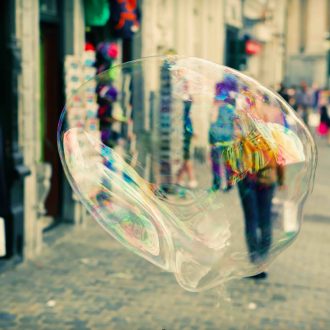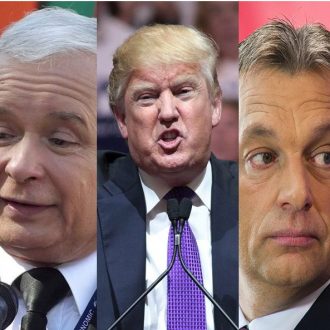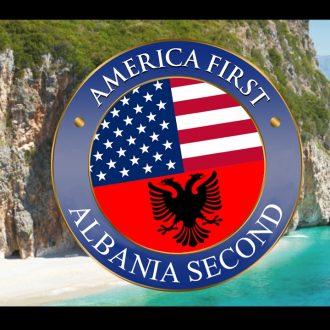Knock, Knock, who is there ?
Last Monday, one of his new short films has been released. For the occasion, I have spent one hour Skyping with Paul, who answered my questions. Before getting to the interview, let me introduce him to you.
Paul is one of these guys you wouldn’t pay attention at. You could even have met him at an organic supermarket, or maybe at your local AMAP. Who knows? Perhaps, you already shared a seat with him on a plane, as he is always on the road, from Brazil to Indonesia. But Paul is different. He was born in South Africa and was there until the age of 13. After a film and video degree he worked for 12 years for a charity and with them he started doing camerawork investigations about illegal trade in natural resource commodities. Since then, he has devoted his entire life to the indigenous cause by making shorts films denouncing the injustice they are suffering from.
Now, I guess you want to know more about this guy. Let’s meet him!
Hi Paul! So glad to meet you. Tell me, how did the project begin?
I worked as an investigator cameraman for a long time. Our first project was in 2006 where we documented indigenous communities in Indonesia. Then, 2 years ago, the Ford Foundation approached us to see if we weren’t going to do another set of films looking at the way indigenous people fight to protect their forest. We developed the “If not us then who” project. It’s a lifetime work.
The documentary shows all the strategies people develop to protect their forest. We went to Brazil, Central America and then Indonesia to document all the stories and now on, we will slowly release them in the lead up to COP21, in December this year.
How was the acceptance within these tribes? Was it difficult?
We always work with local NGO’s that do an impressive work on the ground. For example, in Indonesia, we collaborated with Nature Film Society, a group that works directly with the communities. I have a small camera. I usually film myself, but sometimes I send some operators. Generally, I try to live with them, I eat the same food, I sleep in the same huts on the floor…
The main solution to integrate into the communities is to work with people they trust. They know that the way we work will not be detrimental of the work they are trying to do. They are trustful in the film we are making. I think for them I am essentially a conveyor of their message. I try to get an emotional truth in what they say, what they do to interpret their fights..

© Handcrafted Films
So you have been in contact with numerous communities. How do they fight against the deforestation threat? Are there similar actions across the borders?
I think there are a lot of similarities in some ways, because the impact of the threat is so immediate. First, there is a visual response, where they try to take machines away from their land and when that stops working, they try to reach out using social medias. But a lot of these communities don’t have access to technologies.
So, for example, they come into town with Edwin Shotwin, who was an Indian Indigenous leader (he’s been shot last year), to share the names of the illegal loggers with the NGO’s.
What people need is support, actually, from people in the West, a real backing in the work they are doing, to understand the solutions to protect the forests.
According to you, what can we learn about their relationship to nature and life in general?
I think there is this incredible stillness. There was a leader in Kalemanta, a man called Rayemundos, I looked into his eyes, and he had the most peaceful and calm eyes which you don’t get in any city, Paris, London, or anywhere. He knows what it is to live in the forest, that fruits are ripe at what moment of the year, he knows the sways of the seasons. He just had happiness into him, which a lot of communities share.
Because they are connected to nature, they don’t have the anxiety we carry with us all the time. That’s the thing we have to try to understand in order to bring more nature into our life and get some of this calmness, because nowadays we have all these health issues. A lot of people are feeling very sad about their way of life. Whereas the Indigenous even if they face very traumatic scenarios, where their homes are getting destroyed, they still have a wonderful ease and sense of belonging which is something we should really get inspired of.

© Handcrafted Films
Are you hopeful about our future?
I think the change has already started. It’s not too late. People can start looking at each other in their eyes and understand what the people around are doing. There is a reconnection to the land.
We can see a budding change with the slow movements. People are concerned about what they eat. I think they are realizing that the things have been so disconnected here, it is not too late but it’s gonna take a bit of collective effort.
They have a real intrinsic wellness into them. In the cities, we have lost those connections. We need to get them back. Maybe the future is not working ourselves to the bones, but taking more time for ourselves, reconnecting the bounds of our minds, and taking the growth to a more sustainable pace. But it is a long process that starts with political decisions to go to a Zero Carbon Future. That is why COP21 is so important.
As citizens, what can we do from the outside to help them protect their land?
I think the key is to try to help them with good technologies, in ways that are beneficial and not destructive to their way of life. We can also help them promoting their campaigns, helping to spread out their stories, but then also on the demand side, as consumers we should look at what we purchase. But there is a huge lack of information and a lot of disinformation on products, on if they are green or not green. So it is difficult to be certain that the product does not have a negative impact on the environment.

© Handcrafted Films
In one of your films, From Our Ancestors, you operate a distinction between the roles endorsed by men and women. What about that? Can’t we talk about a double issue: an environmental one and a social/cultural one?
It is quite funny when you see kids playing in the village, you only see the boys playing. The girls work from the age of 5 or 6 right through their life. The hardest working people in the villages are the women. But when it comes to fighting, initially, the men would go up. But what happens in quite a lot of communities is that the men have been arrested, or jailed, or even in some cases murdered. So the women have stepped forwards, and take the fights on. So there is now some women that are leaders.
But still, it is quite sad, because leading is still a man’s thing, in the communities I have visited. But then yes, in the cases the women have stepped forward, they have made an amazing work.
How does the change happen? What is the importance of the emotional dimension?
It takes times. We have to remind ourselves the things we have to do on a regular basis. Trying to connect ourselves with people is important. We need to exchange on a pure emotional level. But we cannot be too hard on ourselves with the things we do because changing is a long process. As long as we do it, it’s ok. We need a deep reconnection with the Earth.
Not to forget, there is the voting act. People need to take their responsibility.
About that, I am so disappointed about the recent elections in England. You think the things will change and then the Tories won. But I think the result just reinforces the fact that if we want to make change, WE have to BE the change. We can’t keep pushing and relying on governments to do it for us. I think politics are just a sort of product of the society.
The political classes we have in our society are not in a very good space at the moment and it is reflecting on our politics. But the politics will do what people want. So if we march in the street, and tell them we want a climate change, then they will do it. But you know, we will need to go in the streets for COP21.
More information
Paul Redman is planning his next trip to The Democratic Republic of Congo for September!
He also plans to make a 90 minutes version film next year, with some more artistic integrity; it will give more space for indigenous’ characters and emotions!
Meanwhile, he will be at the Cannes Festival this week end to meet Jocelyn Thérèse, Head of Advisory Council of Indigenous Peoples and Businenge, for a panel discussion about climate issue. He will also be in Paris in December for COP21, and probably staying at our Place, in the St Christopher Inn.
- The project’s website : If Not Us Then Who
- All the films can be watched on : Handcrafted Films. There, you can also find many other informations concerning the whole team, the awards, the partners…
- Paul Redman’s personal website: His Blog
Coming myself from Argentina and so committed to South American population issues, I want to share with you my favorite film: The Reunion, the film shot in Peru.
Victoria Pollastri
 cc If Not Us Then Who
cc If Not Us Then Who




